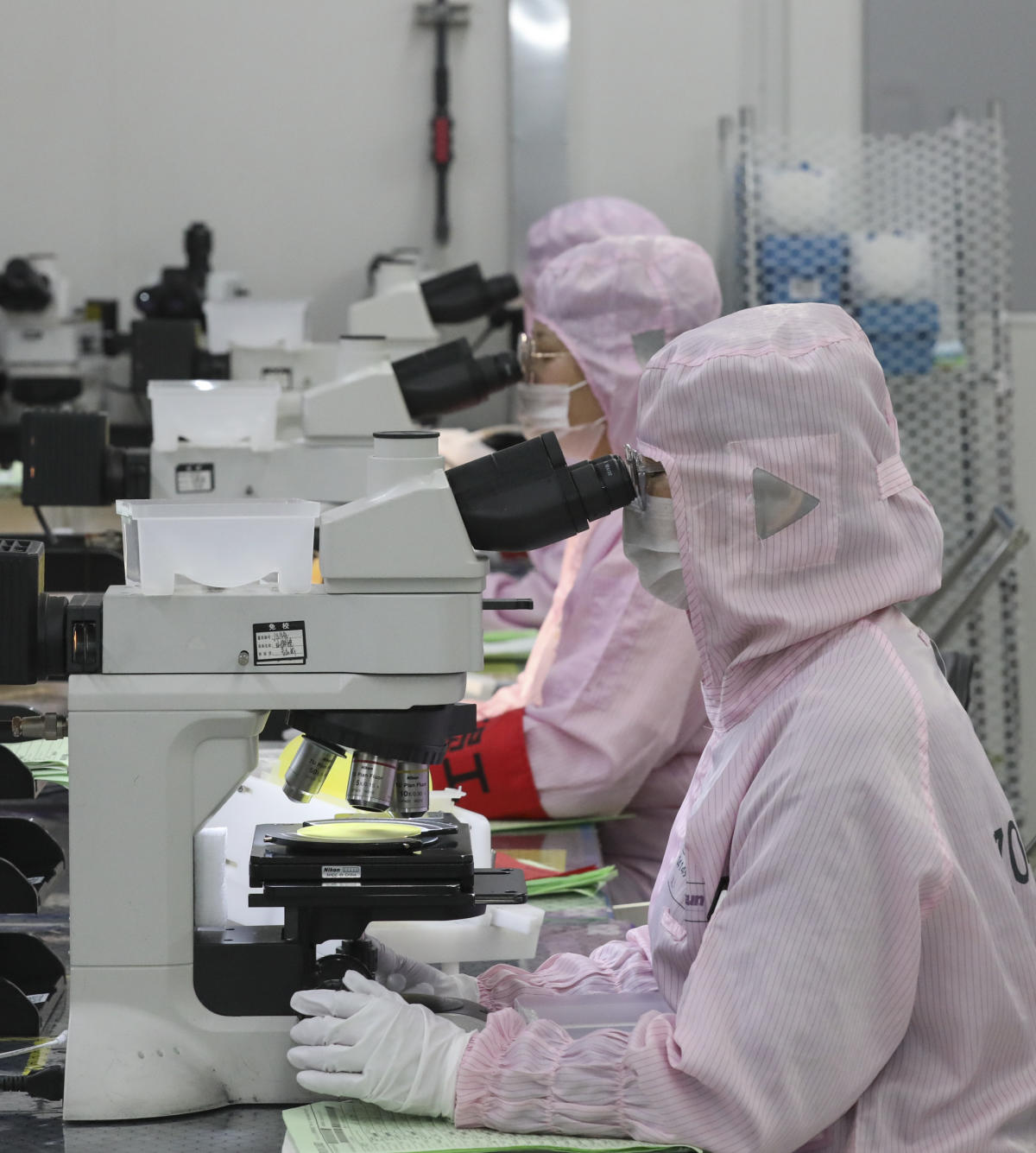US Chip Crackdown Gives China Leverage in Legacy Market

As the US focuses on restricting advanced chips, China is gaining ground in the crucial but overlooked market for older, "legacy" semiconductors.
Since 2022, the US has been tightening the screws on China's high-end semiconductor production, imposing strict export controls and pouring billions into domestic chip manufacturing. This strategy, however, has inadvertently created an opening for China in a less glamorous but equally important market: legacy chips.
New data reveals that Beijing is rapidly gaining ground in the production of these older, widely used semiconductors. According to the Silverado Policy Accelerator, China is projected to install three times as much chipmaking capacity this year as the rest of the world combined over the next three years. A Rhodium Group study forecasts that China will control around 40% of global legacy chip production by 2027.
"What China's doing in that segment of the market is what it has done in many other industries," explains Sarah Stewart, CEO of Silverado. "They are flooding the market with... below-market loans and subsidies that are not offered by anybody else. None of that is based on actual demand."
This aggressive approach has sparked concerns that the semiconductor industry could mirror the trajectory of the solar and steel sectors, where Chinese overcapacity led to a price collapse.
Pressure on pricing is already apparent. Silverado's report highlights that Chinese companies offered prices 20-30% lower than their international competitors in 2022 and 2023. These discounts came despite robust industry pricing, particularly in 2022, when a global chip shortage drove record sales.
While these Chinese-made chips primarily cater to the domestic market, aggressive discounting has helped companies like Semiconductor Manufacturing International Corporation (SMIC), Hua Hong, and Nexchip gain market share at the expense of international players like GlobalFoundries and Samsung.
China's share of global legacy chip production has nearly doubled since 2015, reaching roughly a third last year, according to the Rhodium Group. This figure is expected to grow to 39% by 2027.
The Significance of Legacy Chips
While advanced chips represent the bleeding edge of technology, their functionality relies heavily on a foundation laid by older semiconductors. The US Commerce Department categorises these legacy chips as those built on nodes of 28 nanometres or larger. These chips are considered foundational as they are critical to nearly every electrical device, from smartphones to household appliances, medical equipment, and even military vehicles.
For instance, a typical smartphone uses between 160 and 170 chips, but only three of these are considered advanced, according to Silverado's research. Legacy chips are vital for functions like GPS, Wi-Fi, battery life, and camera controls.
"Thereâs virtually no application that requires an advanced chip that can work without a foundational set of chips," Stewart emphasises. "They go hand in hand."
Despite this crucial role, US policy has prioritised advanced chip production over legacy chips, largely due to China's lagging position in this technology. The Commerce Department has announced $3.4 billion in investments to bolster US legacy chip production, a mere third of the incentives allocated for leading-edge semiconductors.
The rationale behind the focus on denying China advanced chips lies in national security concerns. Commerce Secretary Gina Raimondo has stated that the administration's export controls aim to thwart Chinese advancements in artificial intelligence, military systems, and mass surveillance.
"Supercomputing, AI technology, AI chips in the wrong hands is as deadly as any weapon that we could provide," Raimondo warned at the Reagan National Defense Forum last year.
China's Accelerated Chip Manufacturing
China has been actively developing its domestic semiconductor industry for years, pouring billions into local players. This effort gained momentum in 2019 when the Commerce Department placed Huawei on the entity list, cutting off the telecommunications giant from crucial US suppliers.
The 2022 export controls, which effectively prohibited American companies from supplying advanced chips and chipmaking equipment to China, further accelerated this drive.
China has capitalised on this situation by ramping up legacy chip production, aiming to expand its global market share, gain leverage over the US, and control prices. Central to this strategy is the National Integrated Circuits Industry Development Investment Fund, which has raised $52 billion to develop semiconductor fabrication and design over a decade, focusing on older chips. This fund aims to raise an additional $40 billion by the end of the decade.
This expansion has also benefitted from Western companies. China became the world's largest importer of semiconductor manufacturing equipment in 2023, surpassing even Taiwan by $15 billion, according to Silverado.
Renewed Concerns over Legacy Chips
China's surge in production capacity has triggered alarm bells among policymakers and industry leaders. Earlier this year, California lawmakers sent a letter to the Commerce Department urging a pause on unilateral export controls, warning that such measures "could send longstanding US companies into a death spiral."
Some industry leaders, including Intel CEO Pat Gelsinger, have warned about the repercussions of overly restrictive export controls, arguing that they could accelerate China's timeline for chip production.
"If that line is too restrictive, then China has to build its own chips," Gelsinger stated at Computex in Taiwan.
The Commerce Department has launched a review of US supply chains to better understand how companies are sourcing foundational chips. The Department of Defense has also implemented procurement restrictions on government agencies, prohibiting the use of China-sourced chips starting in 2027.
The European Commission has also taken notice, surveying companies to assess how Chinese firms are using older chips to undercut them.
Reva Goujon, a director at the Rhodium Group, emphasises the need for policy support and international cooperation to counter China's semiconductor ambitions.
"The US needs to effectively create an ex-China market for chips to guarantee demand among US and trusted partners," Goujon advises. "The sustainability of the AI boom is a major variable, as is the US election. Either a Harris administration carries through that plurilateral momentum or we see further fracturing and leaky controls from a Trump 2.0 polarization of partners."
The US's focus on restricting advanced chips has inadvertently created a significant opportunity for China in the legacy chip market, raising concerns about the future of this vital industry. As China continues its push, the US and its allies face the critical challenge of navigating this new landscape and safeguarding their own technological interests.





